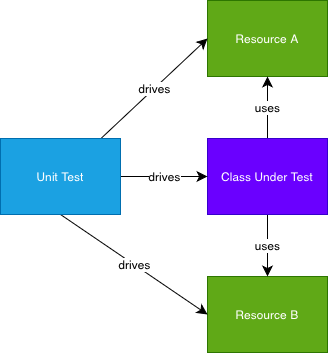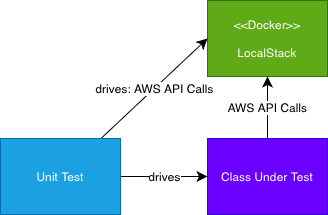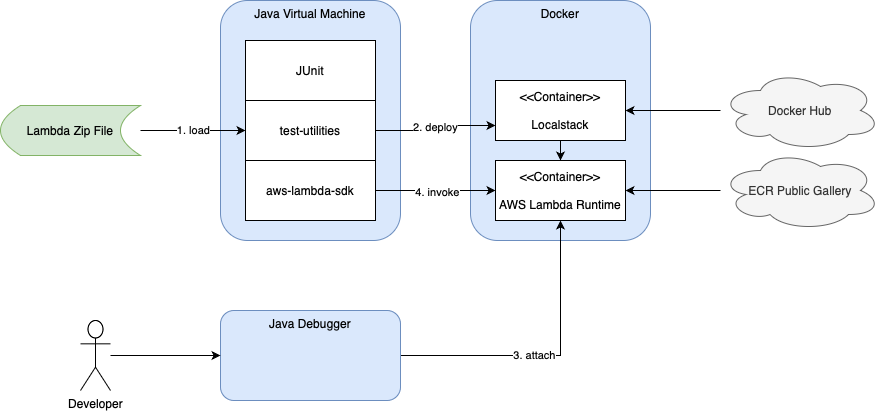Maven dependency conflicts are one of the most frustrating issues developers encounter when building Java applications. When multiple versions of the same library exist in your classpath, it can lead to runtime errors, unexpected behavior, and difficult-to-debug issues. This article provides a comprehensive guide to identifying, understanding, and resolving JAR version conflicts in Maven projects.
Understanding Dependency Conflicts
What Are Dependency Conflicts?
Dependency conflicts occur when your project’s dependency tree contains multiple versions of the same artifact (same groupId and artifactId but different versions). Maven’s dependency resolution mechanism will choose one version based on its rules, but this choice might not be compatible with all parts of your application.
Common Symptoms
ClassNotFoundExceptionorNoClassDefFoundErrorat runtimeNoSuchMethodErrororAbstractMethodErrorIncompatibleClassChangeError- Unexpected behavior in libraries that worked in isolation
- Different behavior between development and production environments
Identifying Conflicts
1. Using Maven Dependency Plugin
The most effective way to identify conflicts is using Maven’s built-in dependency plugin:
mvn dependency:tree
This command shows your complete dependency tree. Look for multiple versions of the same artifact:
[INFO] +- com.fasterxml.jackson.core:jackson-core:jar:2.13.0:compile [INFO] +- com.fasterxml.jackson.core:jackson-databind:jar:2.13.0:compile [INFO] | \- com.fasterxml.jackson.core:jackson-core:jar:2.12.0:compile (omitted for conflict with 2.13.0)
2. Analyzing Conflicts with Verbose Output
For more detailed conflict analysis:
mvn dependency:tree -Dverbose
This shows which dependencies are omitted due to conflicts and why Maven chose specific versions.
3. Using the Dependency Analyze Goal
mvn dependency:analyze
This command identifies:
- Used undeclared dependencies
- Unused declared dependencies
- Potential conflicts
4. IDE-Based Analysis
Most modern IDEs provide visual dependency analysis:
- IntelliJ IDEA: Right-click on
pom.xml→ Analyze Dependencies - Eclipse: Project Properties → Java Build Path → Libraries → Maven Dependencies
Understanding Maven’s Resolution Strategy
Maven uses these rules to resolve conflicts:
- Nearest Definition: Dependencies closer to the root in the dependency tree win
- First Declaration: If dependencies are at the same depth, the first one declared wins
- Version Range: Explicit version ranges override transitive dependencies
Resolution Strategies
1. Explicit Dependency Declaration
The most straightforward approach is to explicitly declare the version you want:
<dependencies>
<dependency>
<groupId>com.fasterxml.jackson.core</groupId>
<artifactId>jackson-core</artifactId>
<version>2.13.0</version>
</dependency>
</dependencies>2. Dependency Management Section
Use the <dependencyManagement> section to centrally manage versions:
<dependencyManagement>
<dependencies>
<dependency>
<groupId>com.fasterxml.jackson.core</groupId>
<artifactId>jackson-core</artifactId>
<version>2.13.0</version>
</dependency>
</dependencies>
</dependencyManagement>3. Excluding Transitive Dependencies
Exclude problematic transitive dependencies:
<dependency>
<groupId>org.springframework</groupId>
<artifactId>spring-web</artifactId>
<version>5.3.0</version>
<exclusions>
<exclusion>
<groupId>com.fasterxml.jackson.core</groupId>
<artifactId>jackson-core</artifactId>
</exclusion>
</exclusions>
</dependency>4. Using Maven Enforcer Plugin
Prevent conflicts by failing the build when they occur:
<plugin>
<groupId>org.apache.maven.plugins</groupId>
<artifactId>maven-enforcer-plugin</artifactId>
<version>3.0.0</version>
<executions>
<execution>
<id>enforce-no-duplicate-dependencies</id>
<goals>
<goal>enforce</goal>
</goals>
<configuration>
<rules>
<dependencyConvergence/>
<requireNoRepositories/>
</rules>
</configuration>
</execution>
</executions>
</plugin>Advanced Debugging Techniques
1. Creating a Dependency Report
Generate detailed dependency reports:
mvn project-info-reports:dependencies
This creates an HTML report showing all dependencies and their relationships.
2. Using Maven’s Debug Output
Run Maven with debug output to see detailed resolution information:
mvn -X dependency:tree
3. Checking Effective POM
View the effective POM to see resolved dependencies:
mvn help:effective-pom
Best Practices
1. Use Bill of Materials (BOM)
Import BOMs for consistent dependency versions:
<dependencyManagement>
<dependencies>
<dependency>
<groupId>org.springframework.boot</groupId>
<artifactId>spring-boot-dependencies</artifactId>
<version>2.7.0</version>
<type>pom</type>
<scope>import</scope>
</dependency>
</dependencies>
</dependencyManagement>2. Regular Dependency Updates
Keep dependencies up to date and use tools like:
mvn versions:display-dependency-updatesmvn versions:use-latest-releases
3. Minimize Direct Dependencies
Reduce the number of direct dependencies to minimize conflict opportunities.
4. Use Dependency Scopes Appropriately
compile: Default scopeprovided: Available at compile time but not packagedruntime: Not needed for compilation but required at runtimetest: Only available during testing
Preventing Future Conflicts
1. Establish Dependency Governance
- Create a team-wide dependency management strategy
- Use parent POMs for version consistency
- Regular dependency audits
2. Automated Conflict Detection
Integrate conflict detection into your CI/CD pipeline:
<plugin> <groupId>org.apache.maven.plugins</groupId> <artifactId>maven-dependency-plugin</artifactId> <executions> <execution> <goals> <goal>analyze-only</goal> </goals> <configuration> <failOnWarning>true</failOnWarning> </configuration> </execution> </executions></plugin>
3. Version Range Strategy
Be cautious with version ranges. Prefer specific versions for stability:
<!-- Avoid --><version>[1.0,2.0)</version> <!-- Prefer --><version>1.5.2</version>
Common Conflict Scenarios
Spring Framework Conflicts
Spring projects often have complex dependency trees. Use Spring Boot’s dependency management or Spring Framework BOM.
Logging Framework Conflicts
Multiple logging frameworks (Log4j, Logback, Commons Logging) often conflict. Use SLF4J as a facade and bridge other frameworks.
Jackson Library Conflicts
Jackson modules must use compatible versions. Manage them centrally in dependencyManagement.
Conclusion
Debugging Maven dependency conflicts requires a systematic approach:
- Identify conflicts using Maven tools
- Understand Maven’s resolution strategy
- Apply appropriate resolution techniques
- Prevent future conflicts with good practices
The key is to be proactive rather than reactive. Establish good dependency management practices early in your project lifecycle, and use automated tools to catch conflicts before they reach production.
Remember that dependency conflicts are often symptoms of deeper architectural issues. Sometimes the best solution is to refactor your application to reduce complex dependency chains rather than working around conflicts with exclusions and forced versions.
By following these practices and using the tools outlined in this article, you’ll be well-equipped to handle even the most complex dependency conflict scenarios in your Maven projects.





